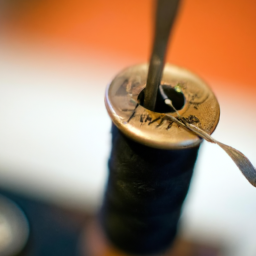
History of Sewing Patterns

In the world of fashion and sewing, patterns play a crucial role in creating unique and beautifully crafted garments.
They serve as templates that enable tailors, dressmakers, and other enthusiasts to bring their creative ideas to life.
Sewing patterns have a history as rich and diverse as the art of sewing itself.
Origins of Sewing Patterns

The concept of sewing patterns goes back centuries. In ancient times, people used simple cloth shapes or draped fabric on the body to create garments.
However, it was during the 19th century that the first commercial sewing patterns emerged.
These early patterns were often made of paper and produced by companies exclusively.
Sewing patterns gradually began to gain popularity, offering a convenient way for individuals to create garments at home.
They allowed people to access stylish and well-fitting clothes without the need for a personal tailor.
These patterns typically included a set of instructions, fabric suggestions, and templates to aid the sewing process.
Evolution and Modernization
As the industrial revolution took place, sewing patterns experienced a significant transformation.
Paper patterns became more accessible and affordable for the general public, leading to a rise in home sewing.
Companies started producing patterns with various sizes, enabling people of all shapes and measurements to utilize them.

Advancements in printing and drafting technologies allowed for more detailed and accurate pattern designs.
In the mid-20th century, sewing pattern companies began including multi-sized patterns within a single envelope, further enhancing their versatility.
The growth of fashion trends and the desire for personalized clothing also contributed to the expansion of pattern choices.
Online Patterns and Contemporary Trends

In recent years, sewing patterns have taken on an exciting dimension with the advent of digitalization.
Now, aspiring tailors can easily access a wide range of patterns online, downloadable from various websites and marketplaces.
Digital sewing patterns provide convenience, instant availability, and reduced costs for both creators and consumers.
Furthermore, contemporary trends have witnessed a resurgence in the popularity of vintage sewing patterns.
These elegant designs from the past offer a nostalgic appeal and unique aesthetic value.
Many sewing enthusiasts enjoy collecting and recreating vintage patterns, showcasing the timeless beauty of fashion.
Conclusion
The history of sewing patterns is an intricate tapestry, reflecting the evolution of fashion and sewing practices throughout the ages.
From simple cloth shapes to digitized designs, patterns have empowered people to express their creativity and showcase their sewing skills.
Whether you’re a beginner or an experienced seamstress, patterns continue to be an indispensable tool in the world of fabric art.




